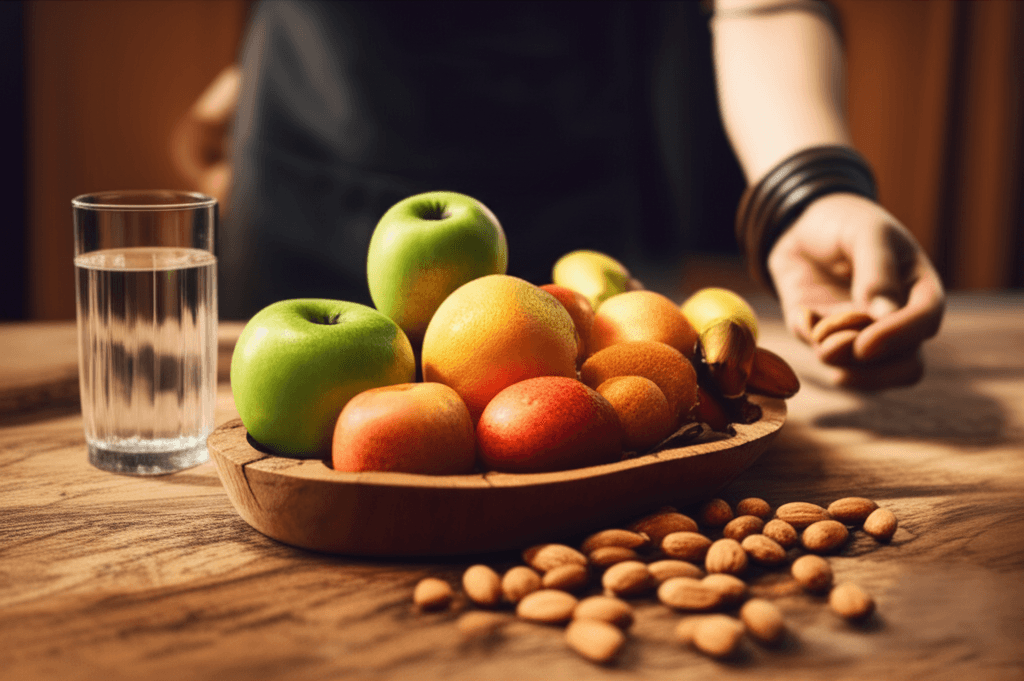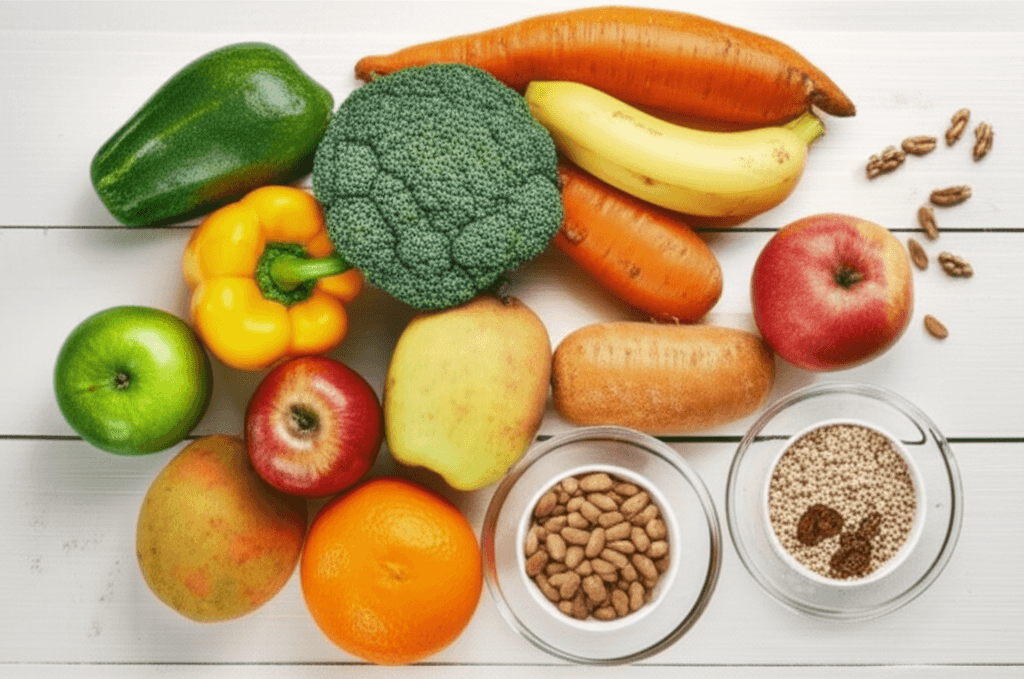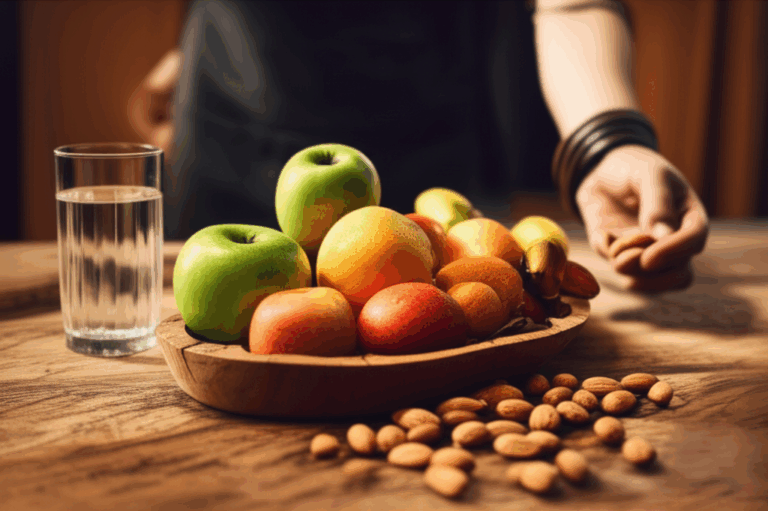Navratri, the auspicious nine-night festival dedicated to Goddess Durga, offers a unique opportunity for spiritual introspection and physical rejuvenation. In 2025, Shardiya Navratri will commence on Monday, September 22, and conclude on Wednesday, October 2. While many observe fasts during this period as a form of spiritual discipline, it can also be a mindful pathway to healthy weight management. However, without proper planning, the traditional fasting diet can sometimes lead to unhealthy choices that hinder weight loss or even cause weight gain. This guide explores healthy and safe strategies to help you achieve your weight loss goals while honoring your spiritual commitments.

Understanding Navratri Fasting and its Potential for Detoxification
Navratri fasting traditionally involves abstaining from grains, legumes, non-vegetarian food, onion, garlic, and common salt, replacing it with rock salt (sendha namak). The primary purpose extends beyond religious observance to include detoxification and resting the digestive system. When done correctly, focusing on “sattvic” (pure, light) foods, this period can naturally cleanse the body and support healthy weight management.

Avoiding the “Fasting Trap”: Common Mistakes That Hinder Weight Loss
Many individuals inadvertently gain weight during Navratri due to common dietary pitfalls. The biggest trap is replacing restricted foods with unhealthy, deep-fried alternatives and excessive sugary sweets. Dishes like sabudana vadas, kuttu pooris, and halwa, while traditional, can be calorie-dense and oily, leading to acidity, bloating, and weight gain if consumed in large quantities. Skipping meals and then binging on large portions during eating windows can also disrupt metabolism and lead to overconsumption.

Hydration: Your Navratri Weight Loss Ally
Staying well-hydrated is paramount during any fasting period, especially for weight loss and overall well-being. Proper fluid intake helps curb cravings, maintains energy levels, supports digestion, and aids in detoxification.
Essential Hydration Tips:
- Water is Key: Aim for 8-10 glasses of water daily, sipping regularly instead of gulping large amounts at once.
- Electrolyte Replenishers: Coconut water, homemade lemonade with rock salt and minimal sugar, or light buttermilk (chaas) are excellent for balancing electrolytes and staying energized.
- Herbal Teas: Ginger, tulsi (holy basil), or peppermint teas can aid digestion and cleansing without causing dehydration.
- Fresh Fruit Juices: Opt for freshly squeezed juices like orange, pomegranate, or watermelon (without added sugar or preservatives) for natural vitamins, minerals, and antioxidants. Smoothies made with yogurt and fruits are also hydrating and filling.
- Avoid Dehydrating Beverages: Limit caffeine (tea, coffee) and sugary, aerated drinks, which can lead to dehydration and energy crashes.

Smart Food Choices for Healthy Weight Management During Fasting
The key to safe weight loss during Navratri lies in selecting nutrient-dense, filling foods and preparing them in healthy ways.
Focus on Nutrient-Dense Fasting Foods
- Approved Flours & Millets: Instead of regular wheat or rice, incorporate buckwheat flour (kuttu ka atta), water chestnut flour (singhare ka atta), amaranth flour (rajgira ka atta), and barnyard millet (samak rice). These are often rich in fiber and protein, promoting satiety and sustained energy.
- Examples: Kuttu ki roti with curd, singhare ke pakode (baked/air-fried), rajgira ladoos, or samak rice khichdi with vegetables.
- Lean Protein Sources: Dairy products like paneer, low-fat yogurt, and milk are excellent sources of protein, helping you feel full and maintain muscle mass. Soaked nuts like almonds, cashews, raisins, pistachios, and walnuts also provide essential nutrition and energy.
- Examples: Paneer salad, fruit and nut yogurt bowls, or paneer bhurji with kuttu roti.
- Fiber-Rich Fruits and Vegetables: Load up on fresh fruits like bananas, apples, pomegranates, papayas, and watermelon, which provide natural energy and hydration. Incorporate vegetables like bottle gourd (lauki), pumpkin, spinach, and sweet potatoes into your meals.
- Examples: Sweet potato chaat, lauki raita, or grilled vegetables.
- Healthy Snacks: Roasted makhana (fox nuts) are high in protein and low in calories, making them an ideal guilt-free snack. Fruits, a small bowl of curd with nuts, or energy balls made with dates are also good options when hunger strikes between meals.
Healthy Cooking Methods
Opt for cooking methods that minimize oil usage and preserve nutrients.
- Prioritize Baking, Grilling, Steaming, and Roasting: These methods are much healthier than deep-frying. Try baked sweet potato chips, grilled paneer, steamed samak idlis, or roasted makhana.
- Use Minimal Healthy Fats: If oil is needed, use small amounts of ghee or healthy cooking oils approved for fasting.
Portion Control and Mindful Eating
- Eat Smaller, More Frequent Meals: Instead of two large meals, opt for smaller portions at regular intervals to maintain steady energy levels and prevent overeating.
- Listen to Your Body: Pay attention to hunger and fullness cues. Eating mindfully can help you avoid unnecessary calorie intake.

Gentle Movement: Exercise During Fasting
Maintaining physical activity is beneficial, but during fasting, it’s crucial to adjust your routine to low or moderate intensity. High-intensity workouts can deplete energy rapidly and may even lead to muscle breakdown.
Recommended Exercises:
- Low-Intensity Cardio: Walking, light jogging, or casual cycling can promote fat burning without excessive strain.
- Mind-Body Practices: Yoga and Pilates improve flexibility, strength, and mindfulness, making them ideal for fasted workouts.
- Bodyweight Exercises: Simple squats, push-ups, lunges, and planks can help maintain muscle and strength without requiring heavy equipment.
Important Considerations:
- Timing: Some find it best to work out towards the end of their fasting period so they can refuel immediately after.
- Listen to Your Body: If you feel weak, dizzy, or light-headed, stop exercising immediately and rehydrate.
- Rest: Ensure you get enough rest and avoid strenuous activities. Naps, meditation, and light yoga can rejuvenate your system.

Breaking the Fast Mindfully
When your fast concludes, resist the urge to overeat. Gradually reintroduce foods to avoid overwhelming your digestive system and prevent rapid blood sugar changes. Start with light, easily digestible foods and spread your caloric intake over your next two meals.

When to Consult a Doctor
While fasting can be beneficial, it is not suitable for everyone. Individuals with pre-existing health conditions like diabetes, pregnant or breastfeeding individuals, or those with a history of disordered eating should consult their healthcare provider before undertaking any fasting regimen. If you experience any discomfort, weakness, or unusual symptoms during your fast, seek medical advice immediately.
By adopting these healthy and safe practices, Navratri 2025 can be a transformative period, allowing you to deepen your spiritual connection while also achieving your weight loss goals in a mindful and sustainable way.







